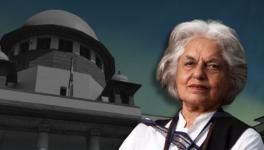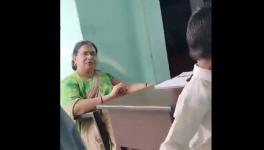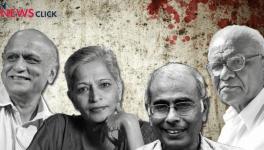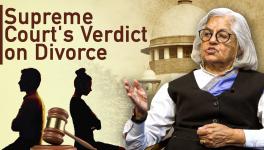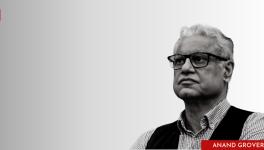Midnight’s Children Took Liberty, Freedom and Independence for Granted
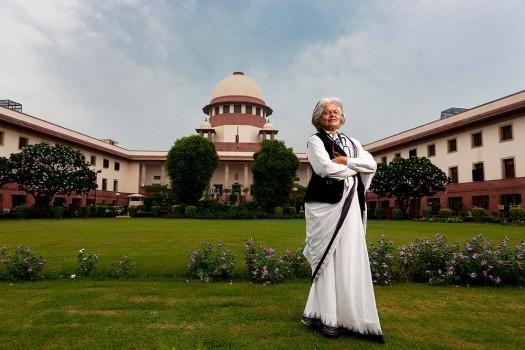
Writing on the nature of the modern Indian State, Sudipta Kaviraj, a political scientist, states that an institution that was traditionally understood as limited to basic furniture of our society has transformed into a ‘central moral force’.
Perhaps the expression constitutional morality in our judicial decision-making comes from there. In any event ‘morality’ finds a place in Article 25 of the Constitution of India.
Kaviraj goes on to describe how exactly the state has acquired this central importance. “It is implicitly invoked in every demand for justice, equality, dignity, and assistance—because all such demands can be made only in its name; and it is the state’s responsibility to meet all these expectations.”
One must, however, distinguish between the State and the Constitution and understand that the State is a creature of the Constitution.
Another thing that has always amazed me that there is no definition of “government” in the Constitution. This was brought home to me when I was arguing the case of Government of National Capital Territory of Delhi versus the Union of India in the Supreme Court. The Constitution does, however, describe States in Schedule 1 and Union in Article 1, when it says
“India that is Bharat shall be a Union of states”.
Note, however, that this is a territorial definition. It describes territorial units and does not actually use the word “State” in the manner mentioned above. What Article 1 does do is to explain that India is a federation. The Supreme Court, however, in my opinion, does not quite tell us what federalism in the Indian context is.
India is sometimes described as quasi-federal, sometimes as federal state with a strong center and more recently we talk about “cooperative federalism”. All these expressions have loose meaning in the context of a one-party state that we have moved towards. Look at the map of India on social media: India is orange!
Hence, we have a host of confusing expressions, ‘State’, ‘Government’ and ‘Union’; the only unambiguous expression being “Constitution”. The question that we must ask is, could the modern state be anything but all-encompassing in nature?
The answer to this and other similar questions lies in the experiences of the American Independence movement as compared to various independence movements in the global south. In the global south, independence struggles, especially in India, have come to acquire central importance as a matter of choice. Such movements across the global south have not only faced an external enemy in the form of a colonial power but rather, at the same time, they have also fought internal enemies of much bigger proportions in the form of extreme poverty, socio-economic inequality, hierarchies of caste, race, gender and much more.
A state that actively takes up the task of eradicating internal inequalities has been of primary consideration for the constitution-framers. In achieving this, the Constitution has also been the tool with which we, the people, have fought these internal enemies.
Writing on India’s constitutional moment, several scholars have expressed a similar sentiment. Uday Mehta writes, “When one considers, for example, the Directive Principles of the Constitution or the ‘strivings’ of the state, they include a fulsome engagement with matters of health, education, individual and communal safety, equality, and prosperity. This constitutionally-enshrined vision of the future is what has often been seen as implying an activist and capacious state, responsible for creating conditions for the exercising of freedom’.
Origins of transformative constitutionalism
The origin of transformative constitutionalism is traced to post-apartheid South Africa. A former Chief Justice of South Africa traces the core of transformative constitutionalism to the preamble of the Interim Constitution of South Africa which reads: “A historic bridge between the past of a deeply divided society characterized by strife, conflict, untold suffering and injustice, and a future founded on the recognition of human rights, democracy and peaceful co-existence and development opportunities for all South Africans, irrespective of colour, race, class, belief or sex.”
While transformative constitutionalism, with regard to its meaning, continues to draw debates in the face of different experiences across the world, key elements that define or differentiate it are the central role of the state (Courts included) in fulfilling the project of emancipation and constant development of the constitutional ideals of liberty, equality and fraternity. It is these principles on which the society must sustain itself and the state must play an active role in constituting a society based on them.
In India the principle proponent of this view in the judiciary has been justice Krishna Iyer, a judge who has had an abiding influence on my own work. Reflecting on the need to interpret the constitution as a transformative document, he remarked that the “authentic voice of our culture, voiced by all the great builders of modern India, stood for abolition of the hardships of the pariah, the mlecha, the bonded labor, the hungry, hard-working half-slave, whose liberation was integral to our independence. To interpret the Constitution rightly we must understand the people for whom it is made — the finer ethos, the frustrations, the aspirations, the parameters set by the Constitution for the principled solution of social disabilities.”
Doctor Ambedkar, emphasizing these principles, remarked that we “must make our political democracy a social democracy as well. Political democracy cannot last unless there lies at the base of it, a social democracy. What does social democracy mean? It means a way of life which recognizes liberty, equality and fraternity as the principles of life.”
The Constitution has been interpreted as a radical document that seeks to reconstitute society, while being mindful that the old hierarchies cannot be wished away. The duty of ensuring that transition is placed on a state that truly imbibes the transformative character and pursues it relentlessly.
Therefore, two key aspects of the term transformative constitutionalism emerge: It envisages attainment of substantial equality by recognizing and eliminating all forms of discrimination as they may have existed or may develop in the future. Second, it calls for a realization of full human potential within positive social relationships.
The use of the term ‘positive social relationships’ instead of limiting it to an individual’s interactions with the state is indicative of the pervasive nature of transformative constitutionalism in the private sphere as well.
Differentiating this understanding of transformative constitutionalism from Constitutionalism, Michaela Hailbronner invites us to think of what transformative constitutionalism is not. Citing US constitutionalism as not transformative constitutionalism, he contends, “US constitutionalism does not entrust the federal state with the task of bringing about a more just and equal society. Its conception of law is ‘reactive’, to borrow from Mirjan Damaska, and its constitutionalism represents, in Somek’s useful terms, ‘Constitutionalism 1.0’ with its emphasis on liberty”.
Therefore, the US constitutional experience is often understood as different from the project of transformative constitutionalism as envisaged by the global south, in which states play an activist role. This is because of the highly divisive hierarchies and acute lack of resources persisting in countries like India and South Africa that the constitution sought to outrun. They also prevented us from developing any notion of a nation in the first place, as Dr Ambedkar contended, since the distinctions based on caste belied any existence of fraternity, and hence a nation.
India’s constitutional moment was said to be a shift away from old practices and hierarchies. More recently, and over seventy years since the Constitution came into force, the full court of the Rajasthan High Court has resolved that advocates ought not to address Judges as “My Lord”, given the mandate of Article 146.
The court led by the Chief Justice, S Ravindra Bhatt, has given us a classic example of what transformation from colonialism to republicanism could mean, even if it be in language. Language after all is the most powerful tool of transformation.
As I said in my open letter to the Chief Justice of India, “Language is more than a mere communication tool. It is an intuitive social, cultural and political indicator, which reflects prevailing attitudes and ethos of any society.”
This was when the Attorney General referred to me as someone else’s wife. To be fair to him, he followed this with a correction and as Justice Krishna Iyer once said, we must “bring up our judges” and, I may add, our male colleagues at the Bar. Transformations happen in these small ways on a day-to-day basis when we refuse to let a small injustice happen to us.
A decolonialization of the legal profession and of our laws is yet to take place. Indeed, this was my own motivation in some small way to question the very institution of Senior Counsel (the equivalent of Queens counsel) and my motivation for shedding the senior gown on 15th August 2017, Independence Day.
Since that day, I have not worn a senior gown despite my peers’ urging. They tell me that I have “succeeded in [this or] that case, so take back your senior gown…”
I don’t know what success means. As far as I can see, that was my Rosa Parks moment. Refusing to wear the senior gown came to me unasked-for. You, the students at NLSU, have had your own transformative moment [in] inviting me, with full knowledge of the fact that an FIR has been registered against the Lawyers Collective, Anand Grover and me and our premises have been “raided”—a word that finds no place in the Criminal Procedure Code (CrPC).
I cannot resist telling you that on the day of the “raid” Anand Grover was in Court Number 4 in the Supreme Court, arguing his part-heard matter. He told the CBI officers that he has “never let down a client and asked for an adjournment and I will not do it today.” It was a defining and testing moment for us to be out there despite knowing that we were being targeted for being human rights defenders.
This loose usage of language poses a threat to our liberties and transformative constitutionalism.
Towards substantive freedom
If the state assumes an active role in ensuring liberty, equality, freedom and other enshrined ideals, the next question naturally is the content of these ideals.
What are the limits to which the state should pursue these ideals and enable people to achieve them? An understanding of transformative constitutionalism demands that the state actively pursue these goals and remove all barriers to enjoyment of such ideals. It is, perhaps, in this light that Amartya Sen talked about “development as freedom” and his capability approach.
Sen, in Development as Freedom alludes to the notion of substantive equality when he talks about the tyranny of unfreedoms that restrict the growth and development of an individual. These unfreedoms that he refers to include systematic social deprivation, neglect of public facilities, intolerance, or over-activity of repressive states.
He argues that the denial of these substantial freedoms is sometimes related to economic poverty, which robs people of the freedom to be adequately clothed, obtain remedies for treatable illnesses, etc. Continuing the same argument, Martha Nussbaum and Sen conceptualise how the capabilities approach better addressed the idea of well-being.
When evaluating well-being, Nussbum and Sen argue, the most important thing is to consider what people are actually able to be and do. The commodities or wealth people have or their mental reactions (utility) are an inappropriate focus because they provide only limited or indirect information about how well a life is going.
Transformative Constitutionalism and the Judiciary
The jurisprudence around the constitutional ideals of equality, liberty, and fraternity began developing after the Emergency. Recovering from the defeat of the Congress government in the post-Emergency period, the Supreme Court, in search of legitimacy, articulated the jurisprudence of Public Interest Litigation.
Justice Bhagwati declared that the adversarial system of the commonwealth was unsuited to Indian conditions. It was based on “self- identification of injury and self-selection of remedy”. Given the vast illiteracy of the people, this would not ensure access to justice.
I have pointed out elsewhere that it is no accident that one of the pioneers of the PIL, as articulated in SP Gupta, Justice Bhagwati was also one of the authors of the ADM Jabalpur judgment. This limitation which is at the origin of PIL must be remembered as a major limitation of PILs itself.
More recently, it is very clear that PIL can be an instrument of oppression perhaps more deadly than any other since it is so heavily dependent on the “discretion” of judges. And that brings me to the point that rule of ‘discretion’ is contrary to the rule of law in that it introduces the rule of predominantly men and occasionally women.
I am aware that no law can be implemented; no executive authority can function without “discretion” as a legal concept in decision-making. But India lacks a theory of “abuse of process”, making it possible for decision to degenerate to favoritism; face law and not case law and targeting of dissenters under cover of law. This must be remedied forthwith.
Power cannot be used for a colleterial purpose in the name of “discretion”. India lacks a theory of responsibility for wrongdoing. India lacks command responsibility for wrongdoing. What has in fair measure, is impunity for decision-makers.
No economic and social rights without civil and political rights
We at the Lawyers Collective too thought when we argued the Olga Tellis case and the Bombay Hawkers Union cases that economic rights are what we need to work on—it was a magic wand that would remove poverty.
I have since then realized that my generation took its civil and political liberties for granted. We were Midnight’s Children and we inherited civil and political liberties. Life has come full circle. Freedom and independence can no longer be taken for granted, leaving us free to work on economic rights.
For many, including me and Anand Grover, for cartoonists and poets, students, the Dalits and farmers, for the accused in the Bhima Koregaon case, the fight for liberty has just begun all over again.
Battling to maintain its legitimacy in the eyes of the public, in the years following the Emergency, the judiciary has now reached an ambivalent space, still opening the doors to PIL when it wishes to and closing then tight when it wishes to.
It is also not surprising that it was during this phase that the affirmative action policies came into the picture through the Mandal Commission. Based on the idea of achieving substantive equality, and subject to wide-ranging debates, reservations in educational institutes, and now in promotions also, as approved by the Supreme Court in BK Pavitra II, have been single-handedly responsible for ensuring whatever little diversity in different walks of life we see today.
Highlighting this importance of reservations, Justice Chandrachud in BK Pavitra remarked, “There is substantial evidence that the members of the Constituent Assembly recognized that (i) Indian society suffered from deep structural inequalities; and (ii) the Constitution would serve as a transformative document to overcome them. One method of overcoming these inequalities is reservations for the SCs and STs in the legislatures and state services.”
The LGBTQI movement and the demand for privacy
In recent times the jurisprudence around transformative constitutionalism has developed strongly, especially in relation to the rights of the LGBTQI communities, through a series of judgments.
In what has to be considered one of the most celebrated recent judgments by the Supreme Court, in Navtej Johar v. Union of India, the court held that transformative constitutionalism is considered one of the objectives of adopting a constitution itself. The purpose of it is to have a constitution which guides the nation into transforming itself from a medieval and hierarchical society to an egalitarian democracy, to embrace the ideals enshrined in the Preamble to the constitution.
It was held that as a constitutional court whose job is to protect its people from humiliation and discrimination, it cannot provide a static interpretation to the rights of liberty and equality and remain a mute spectator to the struggle for rights.
Highlighting what lies at the core of transformative constitutionalism, Justice Dipak Misra remarks, “The rights that are guaranteed as Fundamental Rights under our Constitution are the dynamic and timeless rights of liberty and equality and it would be against the principles of our Constitution to give them a static interpretation without recognizing their transformative and evolving nature. The argument does not lie in the fact that the concepts underlying these rights change with the changing times, but the changing times illustrate and illuminate the concepts underlying the said rights.”
I believe that every generation has the right to decide for themselves what the Constitution means for them, to interpret the Constitution after their own aspirations.
Let us not, however, forget that the battle to decriminalize Section 377 was started 20 years before the Navtej case, by the Naz Foundation, supported by the Lawyers Collective and found its own in a judgment of the Delhi HC in Naz Foundation, reversed most shamefully in Koushal. Navtej is a reaffirmation of Naz.
The judgment of the Supreme Court in Navtej was preceded by the judgment in Justice KS Puttuswamy v. Union of India. This judgment was instrumental in holding the right of privacy as a fundamental right under Part III of the Constitution. While the specific contours of privacy yet remain to be tested in specific factual scenarios, the judgment has set the ball rolling to initiate discourse [in favour of] rights that flow from the right to privacy such as the right to be forgotten, which will have significant impact on the functioning of the criminal justice system.
The Fight for Gender Justice
While the slew of judgments in Puttuswamy, Nalsar, Shafin Jahan and Navtej Johar have reflected the progressive elements in the judiciary, the larger picture has no doubt been rather grim. The relief provided has been limited, and courts have largely shied away from taking any firm stand against the government of the day. Nothing epitomizes this limitation of the judiciary more than its judgments in several cases relating to rights of women, starting from the 1950s to the recent cases of Sabrimala and Triple Talaq. Though the latter two do have a progressive impact, what is being suggested is that the reasoning could be more rigorous and transformative.
The judgments of the Supreme Court starting from the case of Narasu Appu have continuously ignored the question of gender equality on the pretext that personal law is not law within the meaning of Article 13 of the Constitution. The ghost of Narsu Appu stalks the SC to this day and mainly on the rights of women.
This stand of the court was later challenged in the cases of Mary Roy, Gita Hariharan, Shah Bano, Goolrookh, Sabrimala, and the Triple Talaq but the court dodged the question. Religion remains the last frontier that women have to cross to attain equality.
It was only in Sabrimala that the court sought to address the question in the affirmative, exorcising the ghost of Narasu Appu to an extent. In a concurring judgment, Justice D Y Chandrachud held that preventing women from entering the temple amounted to another form of untouchability. The majority ignored the argument. I have been much criticized for categorizing menstrual taboos as “untouchability”, on the ground that I was appropriating the struggles of Dalits! My question was: “Why not?”
I acknowledge that Article 17 was inserted in the context of untouchability of the Scheduled Castes, but there are always new and emerging forms of untouchability. I have witnessed this form of untouchability in my own family and memoirs of childhood leave a lasting impact on us in adulthood.
Goolrookh presents a frightening picture. The question revolves around whether a woman acquires the religion of husband on marriage, as held by the Gujarat High Court. The SC is yet to answer the question. A rather shocking proposition that a woman acquires the religion of her husband on marriage has been upheld by the Gujarat High Court. Thus a woman has the religion of her father on birth and of her husband on marriage!
Also, as was shown in the recent Triple Talaq case, the Supreme Court came up with divided opinions as to why the practice must be stopped. While it was held by two judges that the practice was manifestly arbitrary and unconstitutional, other judges said it was un-Islamic. None of the judges said it was violation of Article 15 or 21. The court relied on the doctrine of “essential practices,” continuing the legitimacy of laws which are at the source of this discrimination.
Thus, whenever the question of equal rights for women has come forward, the approach of the courts has been disappointing.
Interpersonal relationships
The Shafin Jahan case is an illustration of transforming interpersonal relationships. Arguments in this case however ranged from questioning if Hadiya, a 24-year-old Hindu woman, had been brainwashed, programmed or indoctrinated to convert to Islam and marry a Muslim man.
The work of the RSS was on view in full force in protesting the marriage of a Hindu woman to a Muslim man. However, Hadiya stood in the Supreme Court, before the then Chief Justice, Dipak Misra and Justices Chandrachud and Khanwilkar when the court directed that they want to interact with her.
Upon being questioned, “Her crystal-clear voice rang through the court room, ‘I want my freedom.’ Did the court have any choice at that point? No. when asked if she wanted to continue her education, she said “I want my faith and my education". Then, when it was clear that she would be sent to the college hostel, she said, “I want to be able to talk to my husband when I need to discuss anything, I want his companionship.”
This fight for gender justice, perhaps, is the story of failure of transformative constitutionalism in India.
A problem from hell
Sexual harassment at the workplace remains, “a problem from hell”, especially for women in the judicial system and now for human rights defenders as well, as they are just “collateral damage”. Once again, the impunity from legal process that judges enjoy has made it impossible to bring judges who sexually harass to justice.
I must have the singular distinction in this country of having represented woman interns, women judges, and women employees against the judges who allegedly sexually harassed them. In one such case of a sitting High Court judge [who] was impeached unsuccessfully, I had occasion to cross-examine three sitting judges of the High Court.
Consequently, I lost respect for the whole system. One of the judges I cross examined, for this role in transferring the woman judge following the harassment, and whose order to transfer was held to be illegal and irregular, went on to become the chief justice of a high court and was seriously being considered for being appointed to the Supreme Court. We now acknowledge that the “Me Too” movement has yielded no concrete results for women in India. The Problem from Hell, a title which Samantha Power used in relation to the Holocaust, continues to plague us.
Tushar Gandhi takes the issue of Mob Lynching to court
All I wish to say is that mob lynching is not a “law and order” issue but an issue of targeting on communal grounds and is thus a constitutional and federal issue, for which the central government must take responsibility. Vinod Jose, executive editor of The Caravan, at a recent global conference on media freedom organized by the governments of UK and Canada, remarked on these incidents, “Such acts of violence were not spontaneous, but came out of a hatred and intolerance of religious minorities systematically cultivated over a long period of time.”
Mr. Jose was intimidated and discredited for voicing his dissent against the current regime.
The attack on students
The last five years have also witnessed a significant attack on students in different universities. Some of the biggest victims of these attacks have been Rohit Vemula, Najeeb, Kanhaiya Kumar, Umar Khalid and Payal, who stood at the intersection of caste and gender and more. The emergence of a new cuss-word, “anti-national”, is intriguing.
I have elsewhere pointed out in the context of the attack on Kanhiaya Kumar that there is no such crime in the Indian Penal Code, that there is no such crime as “urban Naxal” in the context of the Bhima Koregaon accused, in the Indian Penal Code (IPC), and yet more and more of us are being described as urban Naxals and anti-nationals.
Dilution of the SC/ST Act
The recent judgment of the Supreme Court in the case of Subhash Mahajan was criticized heavily for diluting the law in favour of the SC and ST communities.
What was most frightening about the judgment was the fact that the court based its judgment on the assumption that the SCs and STs were “misusing” the act—in other words, lying about their oppression. We are all, each of us, women, SCs, STs, students, minorities, and finally, human rights defenders, lying before the law! Who then speaks for the truth?
The attack on human rights defenders, the legal profession, front line defenders
In this long series of attacks, the recent targets have been the human rights defenders: Lawyers who have sought to protect the values of the Constitution.
Imagine what would happen if there were no human rights lawyers in the country. Fortunately, there are many. But an attack on lawyers is really an attack on the right to legal defense. When we talk of the independence of the judiciary, we must understand that it includes the independence of the legal profession.
When the judiciary sanctions attack on the legal profession, it is basically feeding upon itself. At the receiving end of this attack, among others, has been the Lawyers Collective, Me, Indira Jaising, and Mr. Grover, who are being victimized for taking up sensitive cases and speaking up against influential figures.
Before them have come lawyers like Suredra Gadling, Sudha Bharadwaj, and Teesta Setalwad for her defense of the victims of 2002 Gujarat [riots]. CBI raids have been ordered against the Lawyers Collective and its office-bearers on false allegations of “undermining democracy” by using FCRA funds. The way these events have transpired leave no doubts about the political motivations behind this targeting. While defending the then police commissioner of West Bengal, I pointed out in court, “There is one way to get immunity from prosecution in this country, join the ruling establishment.”
Do I need to say more?
Conclusion
Life has come full circle for me. As I said I am one of Midnight’s children, I took liberty, freedom and independence for granted. I inherited it. We at the Lawyers Collective thought the battle was only for economic justice and worked in that direction. Today, I realise, my freedom was an illusion. It was foolish to think that our rights could be guaranteed. Poverty cannot be eradicated by surrendering the right to free speech. That is the devil’s bargain. Free speech is a necessary pre-condition for the liberation from “undeserved want.”
I have lived too long, perhaps. I have seen the court as a liberator. I have also seen the courts as an oppressor. Students of constitutional law must know that in any petition filed under Article 32, a fundamental right must be stated to have been violated. There is no such mention in the petition against us, and indeed there can be none. What is more, we have been accused of undermining democracy.
The petition states, “It is submitted that the activities of respondent no 1 while being the government servant clearly amounted to, directly or indirectly, affect or influence electoral politics, decision making process by public servants/bureaucrats, interference with administration of justice through lobbying and media advocacy….”
I did not know whether to laugh or cry when I read this. We, Lawyers Collective, have influenced electoral politics and interfered with the administration of justice? No! If we did try as alleged, indeed we must have failed miserably, as the world can now see.
Transformative constitution for us at the Lawyers Collective now means personal liberty. The right to free speech is now an endangered species of rights.
On behalf of the Lawyers Collective, I thank you for doing us this honor of inviting me to deliver an inaugural address today, despite knowing that the CBI has registered a case against us. Life has changed. I no longer travel alone. I am surrounded by lawyers who volunteer to travel with me. That is my success and my contribution to the legal profession.
Jai Hind, long live freedom.
In appreciation of Professor Sarasu Estha Thomas, Head, Center for Women and Law, NLSUI, and to the students she monitors every day.
Indira Jaising is secretary, Lawyers Collective, a non-government organization that promotes human rights.
Get the latest reports & analysis with people's perspective on Protests, movements & deep analytical videos, discussions of the current affairs in your Telegram app. Subscribe to NewsClick's Telegram channel & get Real-Time updates on stories, as they get published on our website.










